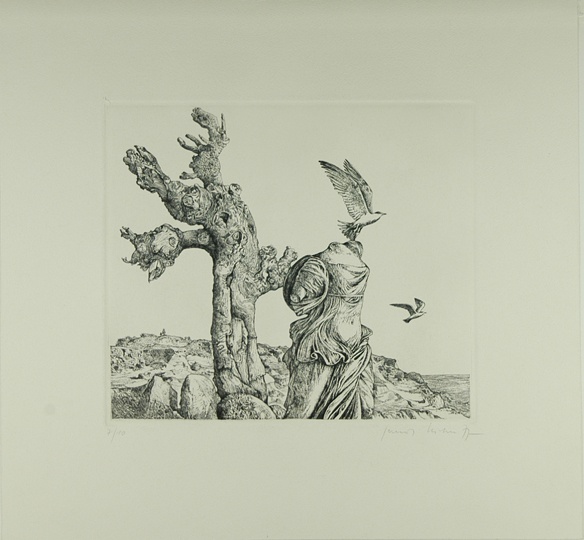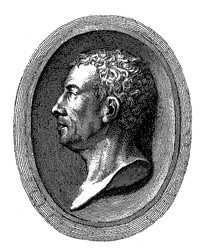Rechts im Bild ist ein nach rechts gerichteter weiblicher Torso zu sehen, dahinter ein abgestorbener knorriger Baum. Weiterhin zeigt das Bild eine Sonne an einem Meeresufer, vom Torso der Frau fliegt eine Möwe auf. Über dem Berührungspunkt von Wasser- und Landhorizont ist eine zweite Möwe im Flug dargestellt. Links auf dem Landhorizont sind ein Erwachsener und ein Kind dargestellt.
Der Torso stellt die berühmte Nike von Samothrake dar. Er entstand nach einem Gipsabguss der Sammlung antiker Abgüsse des Winckelmann-Instituts der Humboldt-Universität zu Berlin.
en

